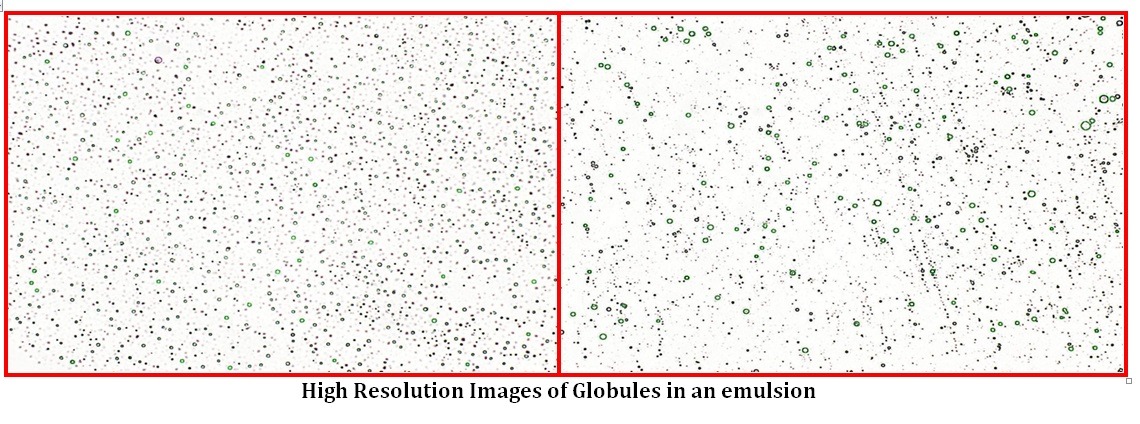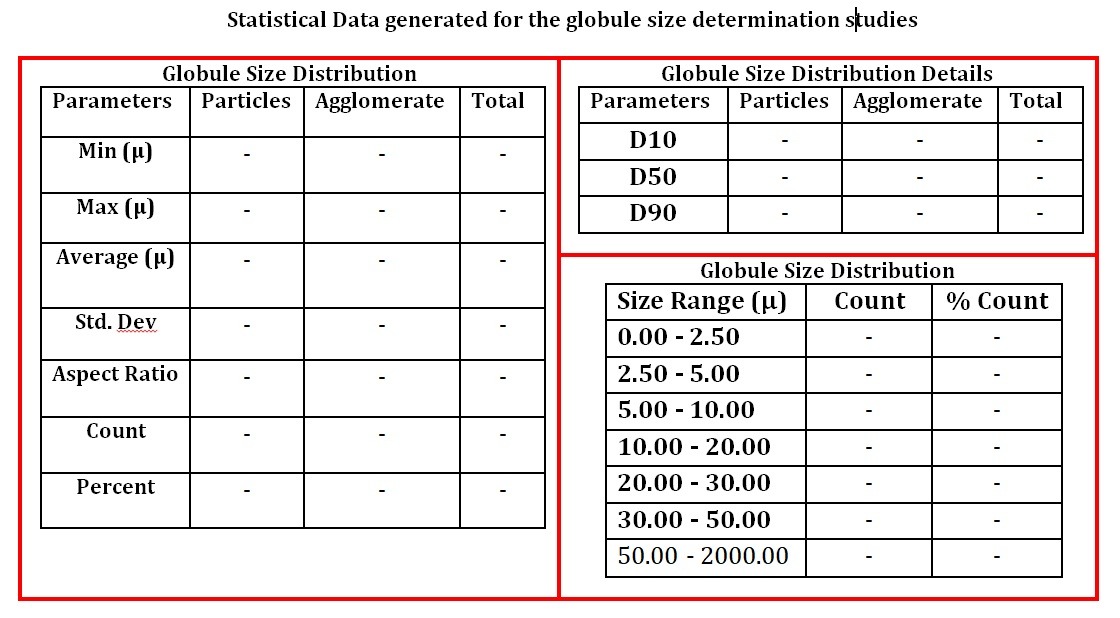Characterization of Globule size in Emulsion
Schedule a MeetingCharacterization of Globule size inEmulsion
An emulsion is a mixture of two immiscible liquids, such as oil and water, which are stabilized by an emulsifying agent. Emulsions are commonly used as a drug delivery system for treating dry eyes, allergies, and infections. In Ophthalmic emulsions the aqueous phase provides hydration and the oil phase provides a lipid layer to protect the cornea and improve the retention time of the drug in the eye. The emulsifying agent helps to stabilize the emulsion, preventing the separation of the oil and water phases.
Emulsions are available in different forms, such as ointments, Creams, gels, and suspensions. The globule size of the emulsion is an important factor that affects the stability and efficacy of the product. Smaller Globules result in a larger surface area, which can improve the delivery of the active ingredient to the targeted tissue. However, smaller Globules also increase the risk of precipitation, which can negatively impact the stability of the emulsion. It is out most important to determine the globule size to avoid the stability issues.

Globule Size in Emulsions
Measuring the globule size in emulsions is important for ensuring product quality, efficacy, regulatory compliance, and patient safety. Accurate and reliable characterization of the globule size is essential for improving the formulation and controlling the stability of the product. But there are several challenges in evaluating the globule size in ophthalmic emulsions, including:
- Inadequate methods:The current methods for evaluating globule size in ophthalmic emulsions are limited, and most of them are subjective, making it difficult to obtain accurate and reliable data.
- Complex emulsion structure: Ophthalmic emulsions are complex mixtures of oil and water, and the globules in the emulsion may not have a uniform size or shape. This complexity can make it challenging to accurately characterize the globule size.
- Technical limitations of the methods: Some methods used for globule size characterization, such as scanning electron microscopy (SEM), are time-consuming and require specialized equipment and expertise, Moreover they evaluate in dry condition not on wet conditions. In dried state there is no existence of globule but foot prints of globules are measured assuming it to be globule. Other methods, such as dynamic light scattering, may not be suitable for low-viscosity emulsions. DLS techniques are indirect methods and the data are not reliable to certain extent.
- Inter-method variability: There may be differences in the results obtained from different methods, which can make it challenging to compare the data and determine the most accurate and reliable method for characterizing globule size.
- Environmental factors: Environmental factors, such as temperature and humidity, can impact the size of the globules in an ophthalmic emulsion and affect the results of characterization.
We at Nishka Research have developed innovative techniques and methods for evaluating Globule size characterization studies which will address all the limitations of the conventional methods. We apply Artificial Intelligence (AI) with high end instrumental techniques to get trust worthy and reliable data. Nishka Research provides various options to the clients which include Optical Microscopy, Scanning Electron Microscopy (SEM), Transmission Electron microscopy (TEM). All the methods adopted by Nishka Research are imaging techniques as they are direct methods for evaluating Globule size and all the techniques are enabled with Image analytics.
The data generated at Nishka Research will analyze using appropriate statistical methods. The results will be compared and evaluated to determine the most accurate and reliable method for characterizing globule size in emulsions.


Globule Size Characterisation in Creams/Emulsions
We at Nishka Research, provide services for the characterization of globule size in creams and emulsions. We understand the importance of globule size and stability in these formulations, as it impacts their performance, efficacy, and sensory properties. Our team of experts has compiled a list of frequently asked questions (FAQs) on this topic to help you understand the different factors that influence globule size and how it can be measured and optimized for maximum stability. If you have any further questions or are interested in our services, please don’t hesitate to contact us.
Frequently Asked Questions
What is a cream/emulsion and why is globule size important in its formulation?
What are the different types of emulsions and how do they impact globule size?
What are the different methods available for measuring globule size in creams/emulsions?
How do processing parameters such as temperature, shear rate, and homogenization impact globule size in creams/emulsions?
How do surfactants impact globule size in creams/emulsions?
How can variations in the formulation impact globule size in creams/emulsions?
Why is droplet size distribution important in the stability of creams/emulsions?
How do different types of surfactants impact globule size and stability in creams/emulsions?
How can globule size impact the texture and sensory properties of creams/emulsions?
What manufacturing process changes can impact globule size in creams/emulsions?
How do storage conditions impact globule size and stability in creams/emulsions?
How can globule size be optimized to achieve maximum stability in creams/emulsions?
How do particle size and surface charge impact globule size and stability in creams/emulsions?
What are the limitations of different methods for measuring globule size in creams/emulsions?
How do different emulsifiers impact globule size and stability in creams/emulsions?
What is the role of pH in globule size and stability in creams/emulsions?
How can the zeta potential measurement help in understanding the stability of creams/emulsions?
How can the selection of oils impact globule size and stability in creams/emulsions?
How can the use of high-pressure homogenization impact globule size and stability in creams/emulsions?
What are the regulatory requirements for globule size characterization studies in creams/emulsions?
Why ChooseNishka Research
Looking for a trusted partner to achieve your research goals? schedule a meeting with us, send us a request, or call us at +91 78427 98518 to learn more about our services and how we can support you.
Need help or have a question?

Nishka Research Brochure
We deliver next-gen research services, Testing & Consultation know more..
